
Nargis Begum was only 25 years old when her first born died, leaving her devastated and confused about what had gone wrong. Like every other woman in her close-knit tribal community in Kashmir, she faithfully visited the Anganwadi centre but did not follow their advice and neglected to take the iron tablets recommended to her. She did not know she had anemia, a silent condition that proved fatal for her child. Her loss was not just a personal tragedy but a stark reminder of the hidden dangers that many women face in Kashmir.
Kashmir is known for its breathtaking beauty, pristine landscape, and timeless charm. But underneath its snowcapped peaks, lesser known to the world there exists a subtle undercurrent of struggle. Infiltrating the lives of every second woman, adolescent girl, and infant, Anemia in the Baramulla region is the silent health crisis weighing the unspoken struggles of resilient women in the region.
Iron Deficiency Anemia (IDA) exacerbates this public health challenge, impacting vulnerable groups especially pregnant women, young children, and adolescent girls due to diverse factors like poor nutrition, blood loss from menstruation, malnutrition, postpartum blood loss, complications during delivery and inadequate dietary iron intake.
Iron-deficiency anemia not only impacts individual work capacity but also bears severe consequences for the overall economy and national development.
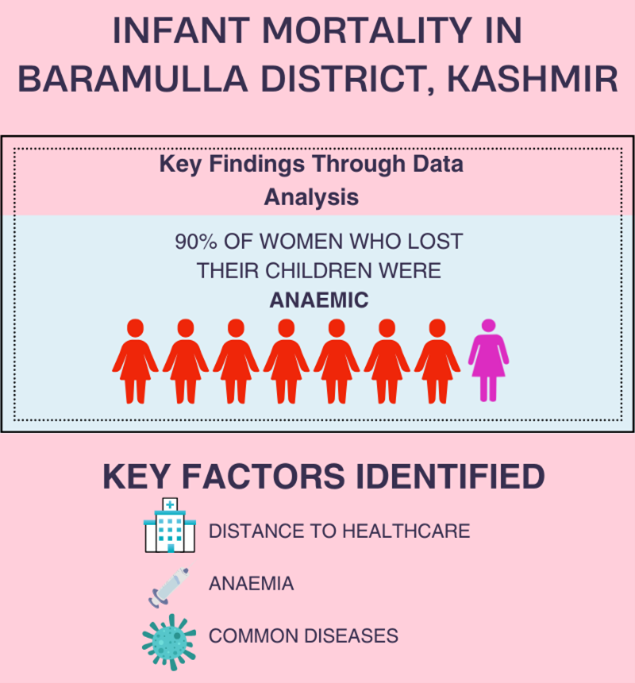
The Health Ministry of India has been recognizing anemia as a critical public health concern. Since a long time in Kashmir initiatives have been focused on educating women about anemia, its causes, and health implications. Baramulla administration adopted Anemia Free Baramulla in 2022 - in line with “Anemia Mukt Bharat” - as its district goal and has set a target to test one lakh adolescent and pregnant women in the district. To further enhance the impact at its core, Dr. Parvaiz Massodi, the Block Medical Officer of Boniyar Medical Block at the time, initiated a collaboration with the Piramal Foundation to tackle the issue of infant mortality. The intervention of Piramal Foundation brought forward critical findings that required immediate attention.
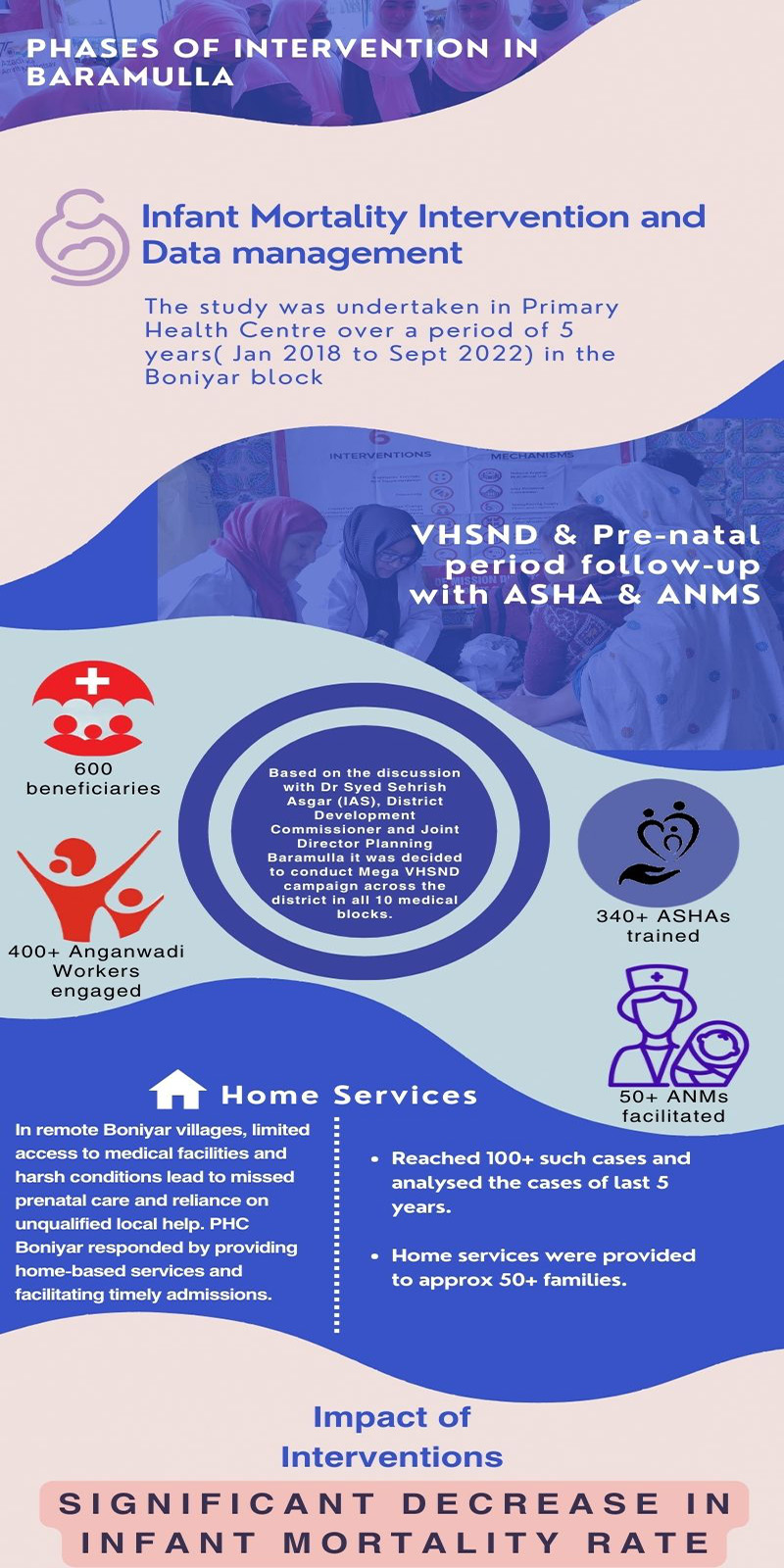
The findings shared in the box, highlights the critical importance of addressing anemia to help reduce infant mortality rates. The study before the intervention on Infant Mortality revealed that the community needed one stop services and VHNSDs had the same scope. The need of convergence different department can come together to solve the problem. So, health, ICDS department which comes under WCD, Education and Panchayati Raj Department came together to solve the problem. Earlier, there were no concept of Mega VHSNDs in the district so, the then District Development Commissioner of Baramulla Dr Syed Sehrish Asgar suggested to conduct Mega VHSND.
The intervention included phases such as Infant Mortality Intervention and Data management (Focusing on places), VHSND and Pre-natal period follow up with ASHA & ANMS, and Home-based service. The purpose of creating a model was to showcase the Village Health and Sanitation Day (VHSND) as envisaged under NHM, was an opportunity for the community members to interact freely with Frontline Workers (FLWs). By learning about the preventive and promotive aspects of healthcare, they will be able to improve their health-seeking behaviour. Revamped VHSNDs in the designated aspirational districts demonstrate a model to ensure the provision of comprehensive services through interdepartmental convergence, increased coverage of services by mobilizing communities, improved quality of services provided at the VHSND, and lastly, provide a framework for scaling up the model VHSND. In remote Boniyar villages, difficult terrain and poor transportation severely limit access to medical care, especially in winter. Pregnant women often miss check-ups, leading to high risks for their babies, and many resort to unqualified local help, worsening health outcomes. Telecommunication and ambulance services are also lacking. PHC Boniyar addressed these issues by providing home-based services and facilitating timely admissions for deliveries.
After implementing a series of interventions, the infant mortality rate saw a significant decrease, showcasing the effectiveness of enhanced accessibility, home-based services, and collaborative efforts in improving maternal and infant health outcomes.

Anemia- a hidden danger in Kashmir
Anemia often goes unnoticed as its symptoms, such as fatigue, weakness, dizziness, and reduced physical strength, are deemed normal, especially among women.
There are many women like Nargis and Ayesha whose loss echoes in the mountains’ crying out the need for accessible, lifesaving equipment, a plea for every child to have a fighting chance.
The challenges of data collection in Baramulla
In the digital age, where data plays a crucial role in informed decision-making, Baramulla faces significant data-related challenges. The remote nature of many tribal settlements makes it challenging to establish and maintain accurate health databases. Limited connectivity and technological infrastructure hinder the collection, analysis, and dissemination of health-related information. This lack of comprehensive data poses hurdles in formulating targeted health interventions and policies tailored to the specific needs of the tribal population.

Nomadic Lifestyle
The nomadic lifestyle deeply ingrained in the cultural fabric of Baramulla's tribal communities presents another layer of complexity. These communities often move across different altitudes in search of pastures for their livestock, leading to a transient existence. The nomadic lifestyle not only poses challenges in establishing consistent healthcare delivery but also brings forth issues of continuity in health records and monitoring. Accessing regular healthcare services becomes a logistical challenge as these populations traverse through diverse and sometimes inhospitable terrains.
Geographical challenge
Baramulla, nestled in the northern part of Kashmir, is characterized by its challenging terrain. The rugged mountains and remote villages create obstacles in accessing healthcare services. The lack of well-connected roads and transportation infrastructure hampers the timely reach of medical assistance, making it difficult for tribal communities residing in distant and secluded areas to access essential health facilities. The geographical isolation exacerbates the health disparities, leaving a considerable portion of the tribal population underserved and vulnerable. A fellow working in the region shares that reaching remote villages like Dazna, Lachipora, Bujthala, Salamabad, and Saran is a formidable challenge making the population far-fetched from timely treatment.

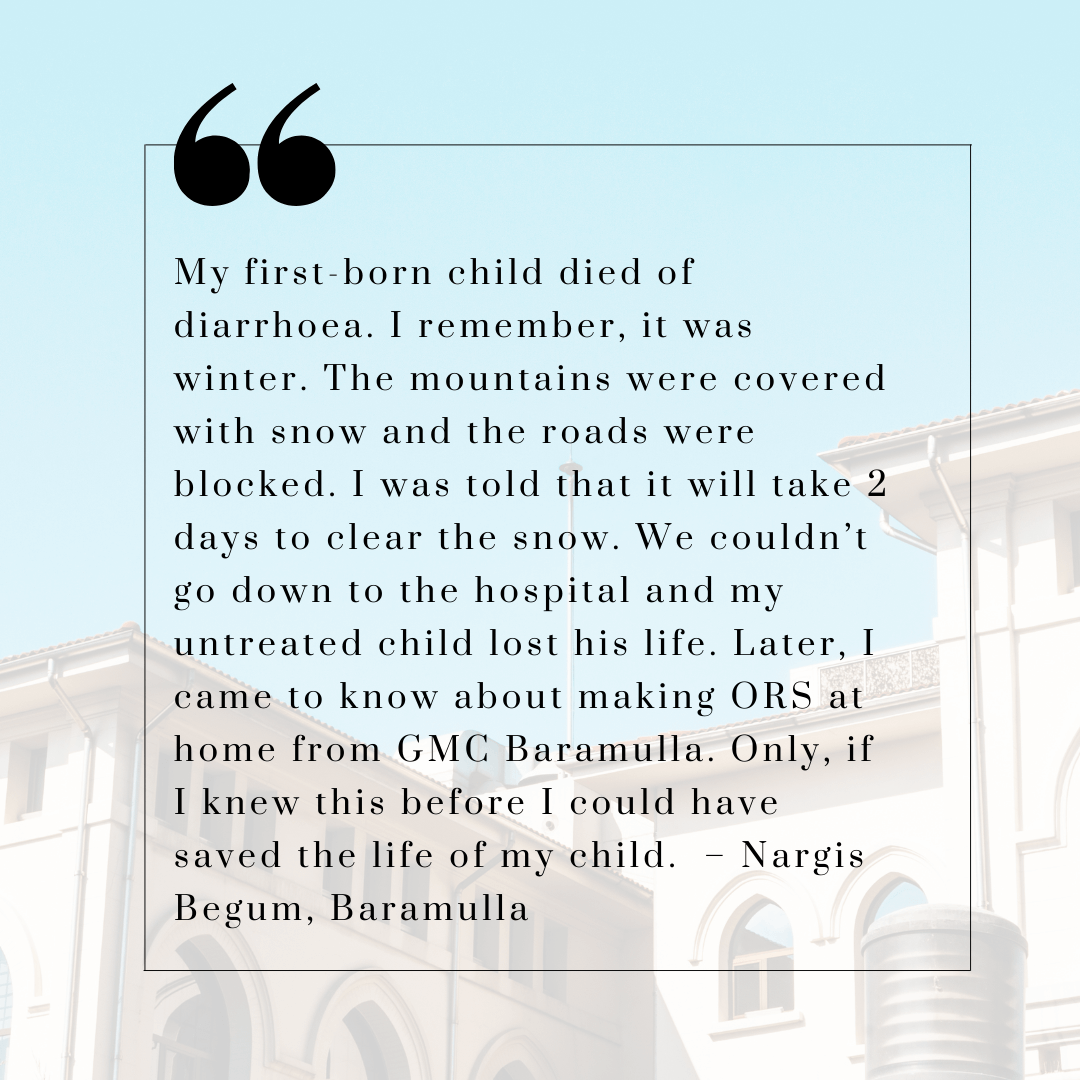
Weather Conditions:
The weather conditions in Baramulla, marked by harsh winters and unpredictable climatic patterns, present an additional set of challenges. Heavy snowfall, freezing temperatures, and the potential for avalanches during winters create barriers to accessing healthcare services.
Emergency medical interventions become more challenging, and the risk of weather-related health issues, such as hypothermia, adds to the complexity of health management in these conditions.
In the face of these challenges, the health disparities in Baramulla's tribal communities persists. Addressing these challenges required a multifaceted approach to create awareness on anemia where various departments like Health Department, Integrated Child Development Services (ICDS) Programme (Women and Child Development), Education and Panchayati Raj Department, Government Medical College and Associated Hospital, Baramulla, came together to fight the battle against anemia.
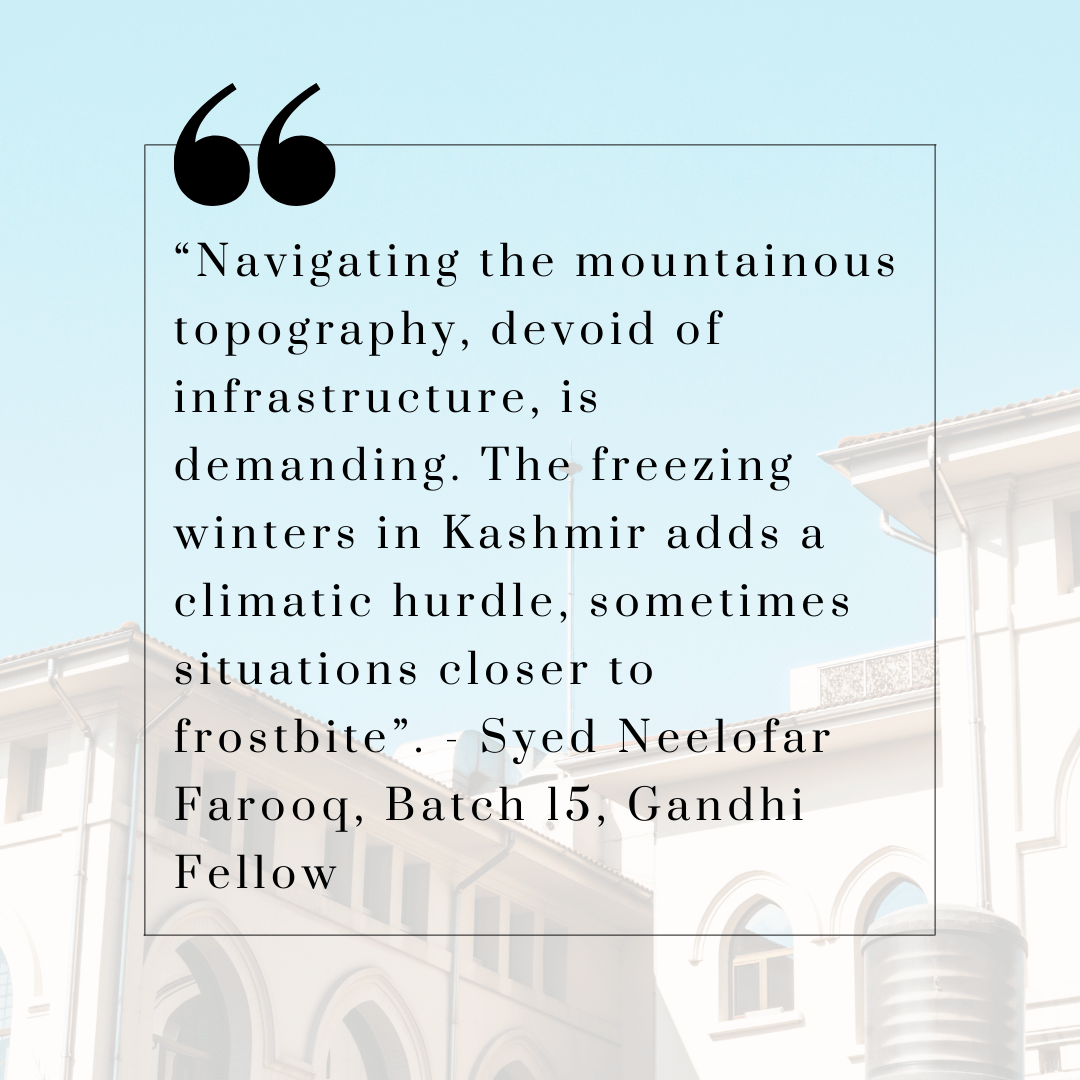
The role of vulnerability analysis in identifying key issues
Each area presents a unique reality, with varying degrees and intensities of the problem intersecting differently. Therefore, resources should not be distributed uniformly across all areas. The risk of uniform distribution is that regions with greater challenges may require more resources, while others may require fewer resources or none at all.
Consequently, conducting a vulnerability analysis with primary data and secondary data we have tailored resource allocation according to the specific degree and intensity of the problem in each area. By prioritizing awareness, accessibility, and comprehensive care, this impactful program has demonstrably reduced the infant mortality rate in Boniyar Medical Block achieving a 100% immunization rate and significant reduction in infant mortality serving as a beacon of hope for mothers and their children in this remote region.
Combating Infant Mortality through Awareness and Accessibility
In Baramulla district, several indicators contribute to vulnerability concerning health issues, including geographical accessibility, proximity to health facilities, community mobility, distance from the district headquarters, and the socio-economic conditions of the community. While two pregnant women with a haemoglobin (HB) level of 6 may be medically categorized at the same vulnerability level, these indicators can significantly impact their overall vulnerability. For instance, a woman residing in a remote and inaccessible area, far from health facilities, will face higher vulnerability compared to a woman with the same HB level residing in Baramulla town. Additionally, the inclusion of more indicators further amplifies vulnerability. Based on the findings, Boniyar which is situated near the Line of Control (LoC), exhibits heightened vulnerability with maximum infant mortality rate.
Role of local media, ASHA workers and NGO’s in creating awareness
Recognizing the nomadic lifestyle as both a challenge and an opportunity.As a solution, mobile health units becomes active in such places. They navigate the terrain to bring healthcare to the doorstep. These units, equipped with skilled medical personnel and essential resources, deliver prenatal and postnatal care directly to nomadic communities. By adapting to the fluidity of their movements, mobile health units ensure that no infant is left without essential healthcare.
Alongside, healthcare accessibility it is required to put focus on the core issue of lack of awareness. Engaging local influencers, healthcare professionals, and community leaders for the purpose aids the promotion of antenatal education programs in collaboration with healthcare providers. Bridging the gap between expecting mothers and essential healthcare information the awareness initiatives contribute to healthier pregnancies and increased infant survival rates by addressing crucial topics such as nutrition, prenatal care, and the importance of early medical interventions.

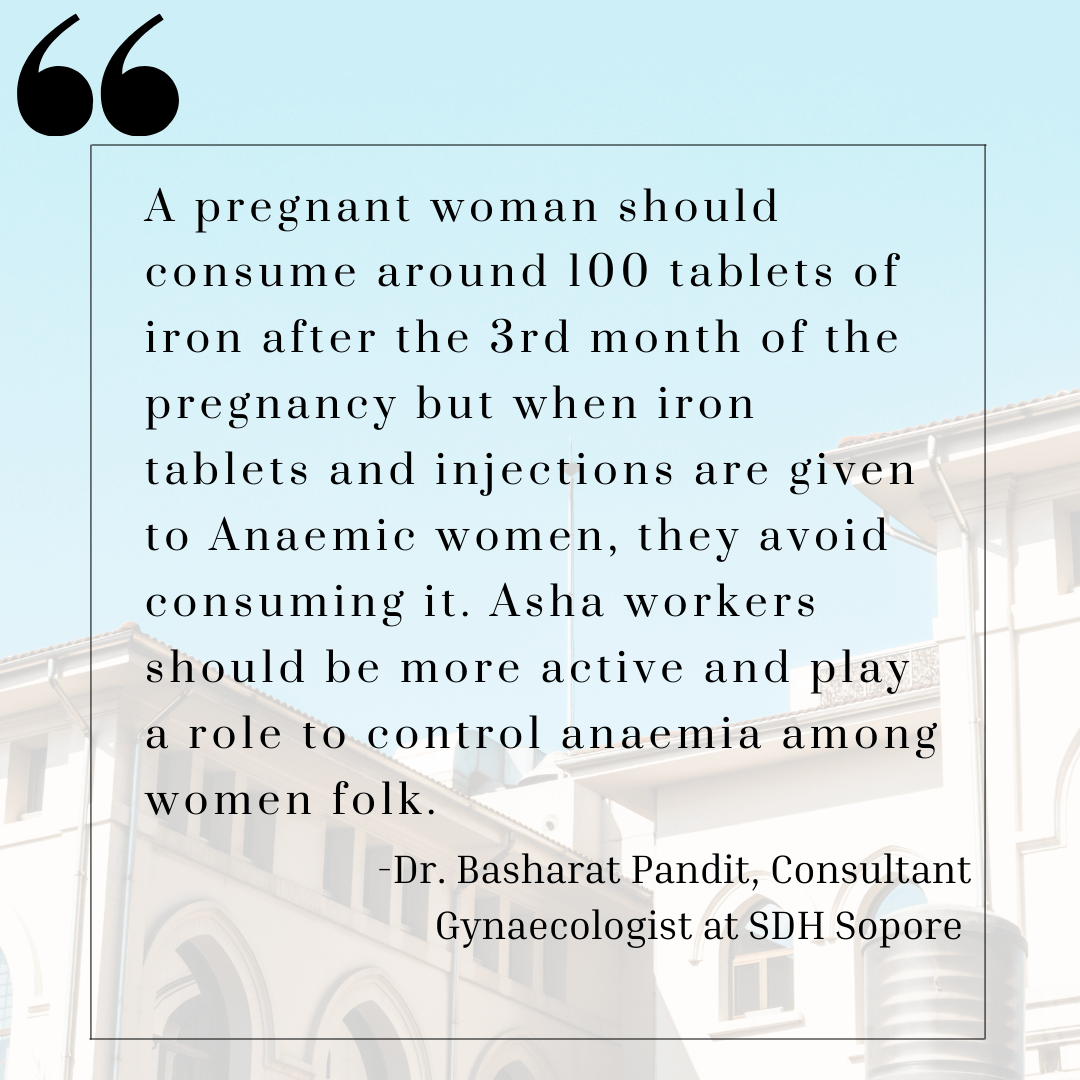
In a culturally sensitive community like Baramulla, ASHA workers, being community insiders, play a significant role in dispelling misconceptions. As they have close relationships with women and influence their health behaviours for the better, they are one of the significant cadres for to create a healthier and empowered community in Baramulla. From raising awareness to fostering community engagement and advocating for policy changes, the role of media is also indispensable. By leveraging the reach and influence of media platforms, we amplify the outreach of our campaign against infant mortality, fostering a healthier future for the people of Baramulla. A local daily of Kashmir published that at Lal Ded hospital Srinagar, seven out of 10 women are Anaemic. Such alarms from the media are not just for stakeholders but also a powerful medium to empower parents and caregivers with the knowledge needed to ensure the well-being of infants. Fostering a sense of engagement and shared responsibility, community members become active participants in the fight against infant mortality, creating a supportive network that values and prioritizes maternal and child health. One such leading example is of Nargis.
Anemia Free Baramulla Campaign launched by Piramal Foundation in collaboration with District Administration Baramulla from the premises of New Type Primary Health Centre (NTPHC) Bernate along with Government High School Bernate of block Boniyar is working towards strengthening the community through data collection, awareness and strengthening the healthcare infrastructure.
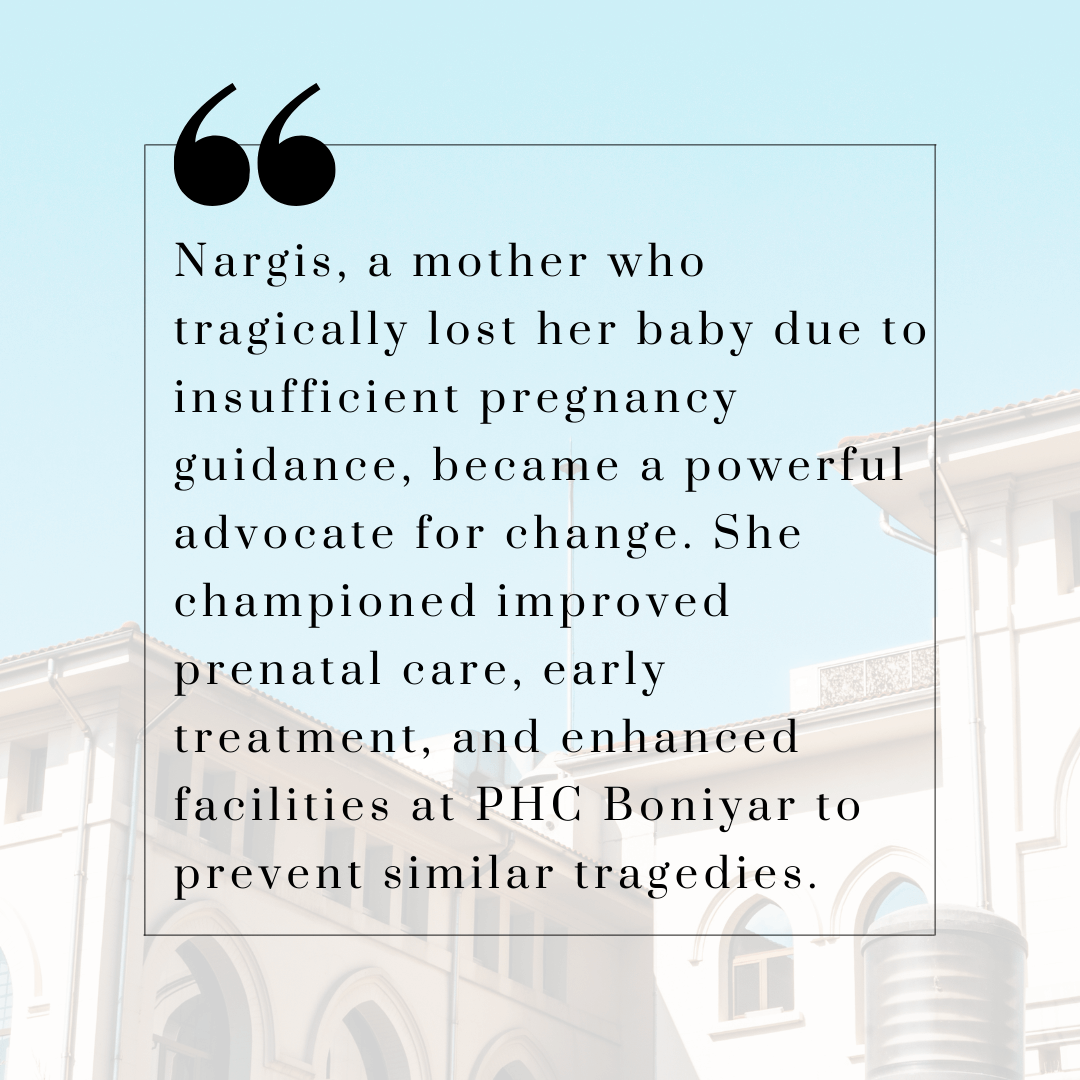

Targeting awareness gaps among pregnant women and addressing their needs for counselling and proper nutrition during pregnancy the campaigns prioritized access to essential medication and regular check-ups throughout pregnancy, and even established preoperative clinics to provide comprehensive care in the crucial days leading up to delivery.
The success of the initiative hinged on the collaborative efforts of the healthcare team and local authorities. Working closely with the DC of Baramulla, the campaign identified critical healthcare gaps and proposed sustainable solutions, like the Mega VHSNDs and preoperative clinics, that have had a transformative impact on the lives of expecting mothers in Boniyar’s hilly terrains.
Acknowledgement
A sincere appreciation to Krishna for being the driving force behind leading the Anemia Free Baramulla program with his team Younis, Saurav (Batch 14 Gandhi Fellows) and Abhishek, Nayeem and Neelofar (Batch 15 Gandhi Fellows). Your lens on this piece helped in portraying the real scenario of Baramulla. A special thanks to Anwesha for her invaluable support in collating data. Expressing gratitude to Geeta for her editorial inputs and keen insights that have enhanced the clarity and effectiveness of the communication, ensuring that the complexities of anemia in Baramulla are conveyed with precision.
Conclusion
Baramulla's journey is a testament to the strength of communities, the dedication of healthcare workers, and the transformative power of collective action in the face of health challenges. It is evident that the path ahead requires a continued collaborative effort. It is a call to prioritize maternal and child health, ensuring that the silent struggles beneath the snow-capped peaks find their voice, and resilient solutions blossom in this enchanting valley.
Sources:
https://pubmed.ncbi.nlm.nih.gov/32047664/
https://risingkashmir.com/anemia-free-dashboard-launched-in-bla-district
https://www.greaterkashmir.com/todays-paper/op-ed/anemia-among-valley-women-and-way-forward/
https://www.prc.mohfw.gov.in/fileDownload2?fileName=4_Causes_of_Anemia-JAM.pdf
N.B: All the names of beneficiaries have been changed to protect their privacy
TAGS
SHARE





